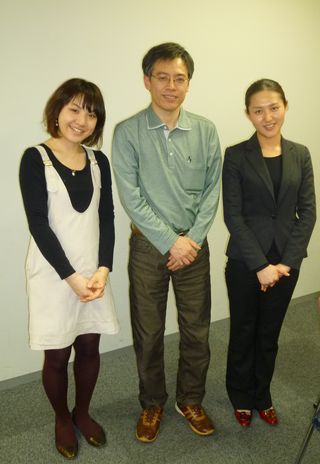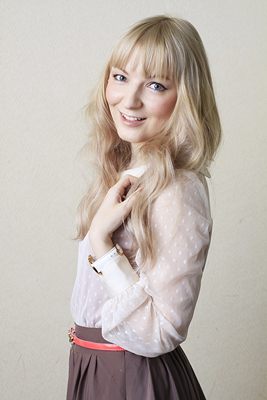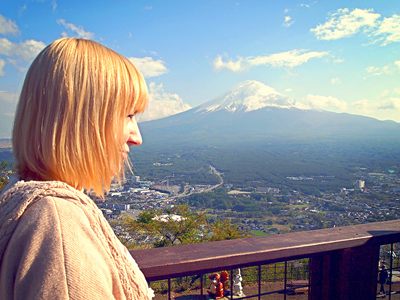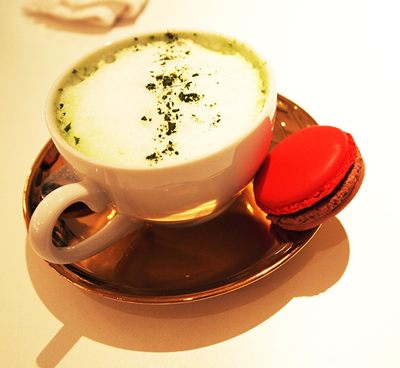ENGLISH RAKUGO perofmance movies
- 2013/03/01 05:09

ENJOY ENGLISH RAKUGO!!
欧米でも”RAKUGO”が大人気!!
英語を楽しみながら覚えることが出来ればこんなにいいことはない。大学生になっても就職や留学のためのTOEICやTOEFLのスコアアップだけではつまらない。
そこで、今、アメリカやヨーロッパでMANGA やANIME 同様に人気が急上昇の、”RAKUGO”に注目!!
実は、RAKUGOは、日本でも中学の英語の教科書で2012年に紹介されている。
ユーモアのセンスがないと国際社会で思われている日本人。本当にそうだろうか?英語落語をマスターして面白い国際人を目指そう!!
(2012年の中学の英語の教科書にもRAKUGOが取り上げられている。)
英語落語をまずは体験してみよう!!
キャナリー落語教室

2007年に始まった関東では唯一の英語落語教室。以前にグローバルコミュニティーの紙面でも紹介しましたが、英楽さんの本職は神田外語大学講師・プロの通訳ですが、落語暦も1984年に立川流に参加するなど大ベテランです。英語のレベルは問われないのでぜひ一度体験講座を受けてみては?
東京都足立区千住3-1 椿ビル1階 ワイハ
http://canary.justhpbs.jp/
問い合わせ:鹿鳴家(キャナリー)英楽
kanariya.eiraku@gmail.com 090-2909-3796
鹿鳴家(キャナリー)英楽氏紹介記事とエッセー
英語で笑いを取って注目度アップを目指そう!!
https://www.yokosojapan.net/article.php/englishrakugo1106_event_ja
英語落語の魅力 1
https://www.yokosojapan.net/article.php/eigorakugo0730_event_ja
英語落語の魅力 2
https://www.yokosojapan.net/article.php/englishrakugo1110_event_ja
英語落語の魅力 3
https://www.yokosojapan.net/article.php/rakugo03_life_ja
関西はこちら!!
英語落語 おふく寄席
8月31日に国際紅白歌合戦を行う大阪国際交流センターで活動中!!
外国人、学生、留学生は無料!!
♪Welcome to OFUKUYOSE, English Rakugo Circle♪
■設立:1998年7月12日
■代表:こねこ(koneko)
■活動 ・稽古毎月一回・プチ寄席6月第三日曜日・定期寄席秋頃開催・不定期に出前寄席あり
■稽古日:毎月第三日曜日_17:00~ 大阪国際交流センター 3F和室
■英語落語の創始者、"Mr山本"こと、故山本正昭先生主宰のHOEインターナショナル「英語落語道場」の1期生7人が、稽古発表の場として、自主英語落語会を開いたのが始まり。
◆見学大歓迎!入会いつでも。一般年会費6000円。在日外国人・学生・留学生無料。
◆連絡先 ofukuyose@gmail.com HP http://ofukuyose.blog9.fc2.com/
英語落語の動画集はこちら

Hello and Happy New Year, everyone!

This is 2nd number of my column, and today’s topic is “What is surprised me in Japan”
It is my 8th year in Tokyo and, to tell you the truth, I began to forgot the things that stroke me here at first. But there is still a lot to be surprised of everyday, that is why Japan is so great!
*Useful*
Japanese always think about how to make things comfortable.
Many foreigners love drink vending machines, and every year, there are innovations in them. Recently, you can see touch screen’s machines and tray to get your drink is easier to use now. Again, there are so many things you can buy by these! Like rice or stockings!
And, of course, it makes you a bit happier when you hear “Arigatou gozaimasu” voice from machines.
If you want to express Japan in one word, definitely, it would be “Useful”
*Clean*
“Kirei” also means “Beautiful” in Japanese, and Japan is very beautiful, but it is also very clean. This is because of that they clean it all the time, but also it is Japanese’s way of thinking. Don’t waste at the streets, and clean your place. Everyone would love to stay in such a clean country.
*Mountain’s view*

In Russia, we don’t have many mountains, so I am always amazed of japanese mountains. Of course, Fuji-san is one of my favorites too. I also love snow montains. I was raised in snow country, but began to snowboarding after I came to Japan. May be, the pretty view is one of the reasons, too?
*Hot springs*
We have Russian sauna, “Banya”, but I also love japanese hot spring’s special atmosphere. Especially open air bath when it is snowing. Unforgettable!
I think “Now this is Japan~” and get so happy in these moments.
*Hard workers*
I respect working Japanese with all my heart. Always smiling, always working with all theirs might! They also know how to have fun after the work, so I can not agree with popular among foreigners “Japanese are working robots” saying. They are very human! I am glad I am able to work with them.
Being in Tokyo makes me to have all these feelings! Different places, different people, I am so glad to live in Tokyo. I am going to convey these feelings to you from now on too!
Today’s little corner
“Sweets to you”

Today’s choice is “Maccha Late”
You can drink these around the world now lately. Traditional japanese green tea and hot milk’s marriage. Japanese know how to arrange “east” and “west”!

There will be no negative effects on health in Fukushima
Scientist Kunihiko Takeda views the fact that the government has raised the yearly exposure limit for the victims of this disaster to 20 millisieverts as a problem. He said, “After the Chernobyl accident, children developed cancer starting four years from exposure.”*8 Although it is not clearly stated, he is referring to thyroid cancer. The problem is that he causes misunderstanding among his readers by leading them to believe that cancer can occur from such low doses of radiation. In the area around Chernobyl, such sickness occurred because the thyroid glands of people were exposed to up to 50 sieverts (although most were exposed to just several sieverts). There were around 100,000 children in Belarus. Among these, four people developed cancer after four years, while a maximum of 13 people developed cancer after nine years. Afterwards, these numbers declined.
In the case of Fukushima, the thyroids of residents have been exposed to low levels of radiation between 1/1,000th to 1/10,000th the amount in Chernobyl. Among the 66 people I examined the maximum dose was eight millisieverts. Based on radioactivity dosage, the risk of Fukushima residents developing thyroid cancer is less than one person per 10 million per year. Since the population of Fukushima Prefecture is two million, thyroid cancer will not result from these low doses. Truly, people with only amateur knowledge of radioactivity need to stop paralyzing the citizens of Fukushima and the entire country with fear. Regarding external exposure of the entire body, the largest dose among those evacuated from the 30-kilometer area around Chernobyl was quite high at 750 millisieverts over a period of seven days*9. In contrast, the dose for people subjected to emergency evacuation from the 20-kilometer area around the Fukushima nuclear power plant, based on my predictions from transitions in the outdoor air dose rate at the time, was a few millisieverts ‐ less than 1/100th the dose at Chernobyl. For that reason, it’s practically a crime to make people from Fukushima and other parts of Japan fear health effects based on the damage that occurred at Chernobyl.
We know that the ovaries of females can be affected at a level of 650 millisieverts or greater, so it’s true that terrible things happened to the people evacuated from the 30-kilometer area around Chernobyl. However, it is possible to affirm that absolutely no such risk is posed to Fukushima or other prefectures.
I believe there are almost no residents of Fukushima Prefecture who have reached the level of 20 millisieverts per year. The estimated dose in Fukushima over 30 days, according to personal dosimeter calculation values from when I carried out my surveys, was 1.0 millisieverts or less in the 20-kilometer area around the plant and its surrounding area from April to May, and also from June to July, while the dose in the area between Aizu and Fukushima City was 0.10 millisieverts or less. From the above, I estimate that the annual external exposure for citizens of Fukushima Prefecture in 2011 will be 10 millisieverts or less, while most people will be exposed to five millisieverts or less.
Scientific evaluations could be obtained by having everyone ‐ from children to adults ‐ wear personal dosimeters. However, the government’s disaster countermeasures office did not do this during the initial period between March and May, when radiation doses were comparatively high. This was a truly careless mistake, especially considering that people in Iitate Village were being advised to take shelter indoors.
From the aforementioned actual values taken by personal dosimeter, my tentative estimate of most Fukushima Prefecture residents’ external exposure to radiation in 2011 is several millisieverts.
Jun Takada (57)
Doctor of Science Professor, Sapporo Medical University
http://www.apa.co.jp/book_ronbun/vol4/2011einglish.html


Yamanashi prefecture is located near the center of Honshu, the main island of Japan. It has an area of 1,723.8 mi2 and a population of 890,000. Surrounded by 6,560-9,840 ft high mountains and rich in nature, 78% of the prefecture is covered by forests--including those of its three national parks and one quasi-national park, such as the famous Fuji-Hakone-Izu National Park.
Kofu city, the capital of Yamanashi, is located in a geographically important area, connecting the industrial areas of the Pacific Ocean and the Japan Sea coasts. Kofu continues to develop as a political, economic and cultural center, especially thanks to the completion of the Chuo Expressway, which offers easy access to the national capital, Tokyo. Yamanashi is well noted as an inland industrial prefecture with both advanced technological and traditional industries.
Among the various products of Yamanashi, the fruits grown in its favorable environment are some of the most famous. Its harvest of grapes, peaches and plums is ranked as the best and most beautiful in Japan, and the wines made of Koshu grapes are well known all over the world. In addition, kaiki (traditional weaving of silk textiles), crystal crafting, and the production of washi, or Japanese paper, are all very popular. Techniques refined in Yamanashi for cutting precious stones are among the most advanced in the world, as well.
Mountain climbing and hot springs are among the most popular forms of recreation in Yamanashi. The many hot springs in the area offer health benefits and relaxation. The largest spring in the prefecture, located in Isawa, is only one and a half hours from Tokyo.
Mt. Fuji and the five lakes for its breathtaking scenery, the southern alps for its serious mountain climbing, the Chichibu-Tama area for hiking and beautiful ravines, and the Yatsugatake highland area for pastoral surroundings--these are the gateways where many people find their chance to escape from the hustle and bustle of urban life. After hiking, tennis, field athletics, or fishing, why not try one of our delicious local specialties? Hoto made of thick noodles and vegetables in a rich miso soup will warm you up on even the coldest winter day.
Yamanashi is an inland prefecture, holding no ocean coast. People in this area have learned to overcome the severe elements of inland climate over a long period of time. This is said to have built a character of patience and endurance in the populace. You will find people warmhearted, caring and conscientious.

World Heritage Nikko’s shrines and temples
「TOCHIGI Visitors Guide」download [PDF 7,949KB]
Nikko, an international tourist city representing Tochigi Prefecture, has exquisite history and culture. The two shrines and one temple here, including Toshogu Shrine, have been designated a World Heritage Site. This area is also blessed with natural beauty; Lake Chuzenji, Senjogahara and other scenic sites show different aspects by season. Hot springs with an atmosphere unique to spas also lure many tourists.


Senjogahara
The high moor extending over a plateau 1,400 meters above sea level is one of the most renowned wetlands in Japan. A variety of plants and animals live here, and the alpine plants are particularly beautiful in summer. In autumn, the entire grassland is colored red and yellow.

Odashirogahara
This marsh, approximately 650,000 m2 in area, is located to the west of Senjogahara. There is a well-kept promenade for hikers. Car traffic is banned here to protect the national environment, and hybrid (low-emission) buses are in operation from Akanuma along the national highway route to Senjugahama.

Mt. Nantai
Since Priest Shodo successfully climbed this mountain in 782, Mt. Nantai has been the most important religious site for believers in Nikko Shugendo (ancient Japanese religion of mountain asceticism). The summit commands a panoramic view of the entire Kanto region. As can be seen by the fact its eruptions resulted in the formation of Lake Chuzenji, this mountain can be considered to be the origin of many topographical features of the present Oku Nikko.

Lake Chuzenji
This lake located high on a plateau with an altitude of 1,250 meters is one of the most famous lakes in Japan. Lava discharged from the crater of Mt. Nantai during its past eruptions dammed the Daiyagawa River, forming Lake Chuzenji. It boasts of being one of the most transparent lakes in Japan, with the seasonal changes of the surrounding area beautifully reflected on its tranquil surface. Kegon Falls is the outflow of this lake.

Ryuzu Falls
This waterfall, located upstream of the Yugawa River that flows from Lake Yunoko into Lake Chuzenji, falls 210 meters over the lava spewed from the crater of Mt. Nantai. A teahouse at its basin offers a breathtaking view of the surrounding area, which is particularly beautiful in spring when azaleas are in full bloom and in the autumnal foliage season.

Kirifuri Falls
Kegon Falls, Urami Falls and this Kirifuri Falls have been included in the three most renowned waterfalls in Nikko since long ago. The observation platform in front of the waterfall offers a spectacular view. This waterfall also shows different facets depending on the season, each of which blends in perfectly with the surrounding scenery. The view is particularly impressive in the foliage season from mid to late October.

Kegon Falls
Kegon Falls, one of the most famous waterfalls in Nikko, has both dynamic and elegant aspects, with its falls plummeting some 97 meters, while retaining exquisite beauty created by nature. It is included in Japan’s three most renowned waterfalls together with Nachi Falls (Wakayama Prefecture) and Fukuroda Falls (Ibaraki Prefecture). Visitors can go to the bottom of the gorge by elevator. Although its view never fails to enchant visitors throughout the year, Kegon Falls is particularly dazzling when it puts on autumnal colors and when it forms huge icicles in winter.

Nikko Kisuge
Nikko Kisuge, the alpine flora bearing orange flowers, grows in clusters in the Kisuge Plain of Kirifuri Highland, where the entire slopes turn yellow from late June to early July, with tens of thousands of Nikko Kisuge blossoming all at once.

Toshogu Shrine
Constructed as the mausoleum of Ieyasu Tokugawa in 1617, this shrine was later rebuilt into the present impressive shrine under the reign of the Third Shogun Iemitsu. All the buildings here have been designated as National Treasures and Important Cultural Assets. In December 1999, the Toshogu Shrine and other shrines and temples in Nikko were officially designated as a World Heritage Site.
One of its gates Yomeimon is also called Higurashimon (twilight gate), because viewers never get tired of admiring its beauty all day till twilight. Visitors are also overwhelmed by as many as 5,000 ornate woodcarvings, including Nemuri Neko (Sleeping Cat) and San Zaru (Three Monkeys), which are the culmination of the supreme craftsmanship in the Edo Period.

Rinnoji Temple
Rinnoji originated from the Shihonryuji Temple established by Priest Shodo, the founder of Nikko mountain worship. This temple prospered as a mecca of mountain worshippers coming in large numbers for religious training. Rinnoji became an important religious center following the death of Ieyasu Tokugawa and the construction of Toshogu Shrine. In December 1999, Rinnoji and other temples and shrines in Nikko, including the Toshogu and Futaarasan shrines, were registered as a World Heritage Site.
This temple has many must-sees, including the main hall called the Sambutsudo (Hall of Three Buddhas), the Shoyouen garden, the Houmotsuden which stores 30,000 treasures and the Taiyuin Mausoleum dedicated to the Third Tokugawa Shogun Iemitsu. It is almost impossible to see all of them in one day.

Futaarasan Shrine
The origin of this shrine is believed to date back to 790, when Priest Shodo established its main shrine. Futaarasan Shrine was esteemed as the most important shrine in Shimotsuke (now called Tochigi) in ancient times. In the Kamakura Period, this shrine came to be considered to be the guardian god of the Kanto Region by the Shogunate and baronial families. The Haiden (oratory) and the Honden (sanctuary) are maintained as they were at the time of their construction in 1619. This shrine and other temples and shrines in Nikko, including the Toshogu Shrine and Rinnoji Temple, were registered as a World Heritage Site in December 1999. There are many must-sees, including the Bake-Doro (Goblin Lantern), the Futaara Reisen (Miraculous Spring) and the Daikokuden (Main Temple).

Memorial Park of the Italian Embassy Villa
The former site of a villa used by Italian ambassadors to Japan until 1997 was purchased and converted into a park by the Tochigi Prefectural Government. The attached International Summer Resort History Museum displays furniture and furnishing goods used in the villa, reminding visitors of days when this area prospered as a summer resort from the middle of the Meiji Period to the early Showa Period.

Memorial Park of the Nikko Tamozawa Imperial Residence
This residence was originally part of the Akasaka Detached Palace in Tokyo, and moved here in 1899 for Emperor Taisho (then prince) to stay there for his health. The building was refurbished and is now opened to public as a memorial park. This is one of the largest wooden imperial residences constructed in the Meiji and Taisho periods. Built in Japanese style, this residence uses carpets and chandeliers as part of its interior, indicating the semi-Western lifestyle back then.

Yayoi Festival
This traditional Futaarasan Shrine festival is said to have originate around 770. It is now held annually from April 13 to 17, heralding the arrival of spring in the mountain city Nikko. Of a variety of religions events organized during the festival, the greatest attraction is the parade of 12 flowered festival floats from the different areas of Nikko assembling from the east and the west.

Nikko Yumoto Hot Springs
This hot spring resort is located deep in Senjogahara along the northern shore of Lake Yunoko. Priest Shodo, the founder of Nikko, is said to have found this place in 788 and named it Yakushinoyu (“medicine man’s hot bath”). Hot springs can be seen gushing out from the springhead located in the nearby marsh.

Great Spring Festivals of Toshogu Shrine
Of many annual events at the Toshogu Shrine, this festival is the greatest religious occasion. The 1,000 Samurais Parade (Hyakumonozoroe Sennin Gyoretsu) on May 18 is particularly impressive, by reproducing the huge procession formed when the remains of Ieyasu Tokugawa were moved to Nikko. Locals dressed in Nikko’s traditional warrior costume parade through the city. On the day before (May 17), Yabusame (the art of shooting arrows on horseback) is performed.